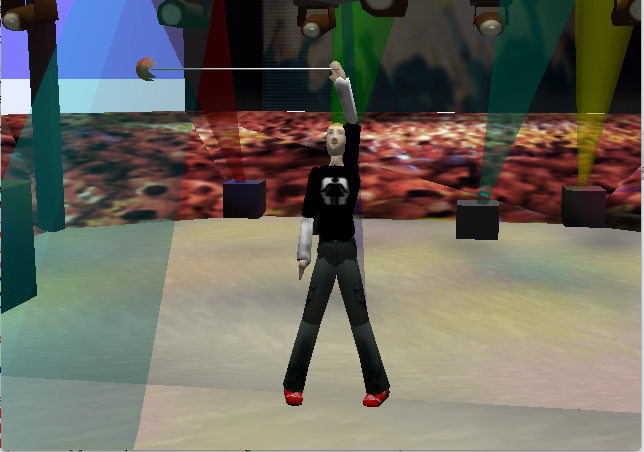Demonstrations

Twirled Affordances, Self-Conscious Avatars, & Inspection Gestures
We explore the potential of self-conscious avatars, not in the sense of self-aware artificial intelligence, but rather figurative projections that not only display real-world data in mixed virtuality environments but also automatically accommodate virtual camera position to maintain visual and logical consistency with human users. Like television or movie actors who adjust their pose to complement a camera point-of-view, our avatars are aware of virtual camera position, and, by implication, the projection mode of an active human pilot assumed to be visually monitoring the scene- typically via projected, dorsal “tethered” perspectives or reflected, frontal “mirror” perspective.
Avatars and virtual objects in our “Tworlds” scenes, including virtual cameras, are rigged to be driven by such twirling mobile devices. A unique feature of the rigging is that the avatars are strategically ambidextrous: although a human player typically uses a particular hand for twirling, as the viewpoint moves around, the puppets dynamically switch hands, even while a prop is whirling, to allow intuitive visual and logical alignment by the human user facing a monitor.
By synchronizing rotation about its axis with revolution around an object of regard, such as the avatar projection of a human pilot, a phase-locked virtual camera expresses an “inspection gesture,” like the tidally locked moon orbiting the Earth. When the virtual camera is in front of it, a self-conscious avatar presents itself as a reflected image of the user, and when the camera circumferentially swings behind, the same avatar manifests a classic "FPS" (first- person shooter) projection of the user. Our adaptive Tworlds application leverages the alignment of the locally horizontal orientation of compass-derived yaw data, the symmetrically bilateral anatomy of humans and figurative avatars, and the horizontal orientation of an inspection or spin-around gesture.
Michael Cohen
Kensuke Nishimura
Spatial Media Group, University of Aizu






